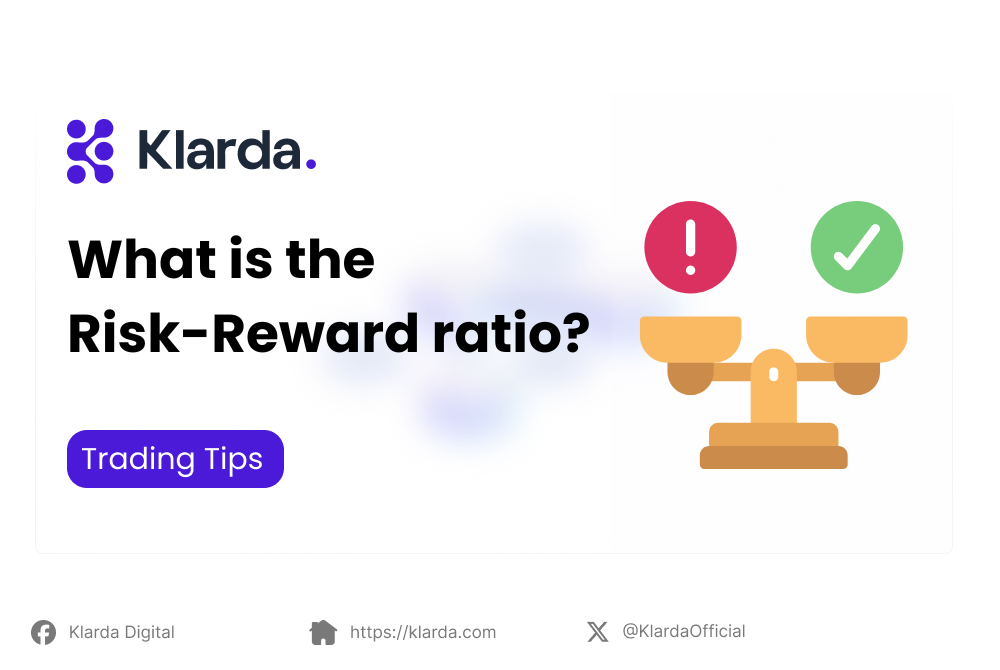What is the Risk-Reward ratio? Tips for using the Risk-Reward ratio effectively?
The Risk-Reward Ratio underpins your market knowledge, guides your trading and investment decisions. What is The Risk-Reward ratio? How to calculate this ratio?
The Risk-Reward Ratio is a crucial tool for evaluating a trade's potential profit and loss. To determine a trade's viability, it should be used in conjunction with other risk management strategies. But what is the Risk-Reward Ratio? This article will explain it.

KEY TAKEAWAY
- The Risk-Reward Ratio (RR) compares the potential loss to the potential gain in a trade.
- The Risk/Reward Ratio is determined by dividing the difference between the entry price and the stop-loss level by the difference between the take-profit level and the entry price.
- Although the Risk/Reward Ratio has many advantages, it still has some imperfections.
- To effectively use the Risk/Reward Ratio, follow these four tips: evaluate your risk tolerance, choose a suitable Risk-Reward ratio for each asset and strategy, stay disciplined and avoid emotional decisions, and use tools for calculation and tracking.
WHAT IS THE RISK-REWARD RATIO?
The Risk-Reward Ratio (RR) gauges the potential loss against the potential gain in a trade. It's calculated based on the differences between the entry price, stop-loss level, and profit target.
A stop-loss order automatically sells your asset if the price hits a predetermined level, limiting further losses. The RR ratio helps assess whether the potential reward justifies the risk, with a lower ratio indicating a more favorable risk-reward balance.
FORMULA OF THE RISK-REWARD RATIO
To calculate the Risk-Reward Ratio, you need:
First determine Risk: This is the potential loss, calculated as the difference between the entry point and the stop-loss point.
Second determine Reward: This is the potential profit, calculated as the difference between the target price and the entry point.
Final we have formula:

PROS AND CONS OF THE RISK-REWARD RATIO
Pros
**Risk Tolerance
Every person has a unique level of risk tolerance. The Risk/Reward Ratio helps in choosing and evaluating investment options based on one's risk capacity and anticipated returns.
Investment Choices
The Risk-Reward Ratio helps investors make informed decisions by evaluating different investment alternatives.
Estimating Risk-Adjusted Returns
Even when investments yield profits, it’s essential to evaluate whether the returns justify the risks taken.
If the returns fall short of expectations relative to the risks, investors can reconsider whether the investment is worthwhile.
Risk Management
Risk can be managed using four strategies: avoiding it, reducing it, transferring it, or accepting it. By leveraging the Risk/Reward Ratio, investors can optimize their portfolios to enhance returns and minimize risk through various strategies.
Traders managing different financial instruments can mitigate losses by using stop-loss orders, guided by the Risk/Reward Ratio.
Cons
Not Always Accurate
The Risk/Reward Ratio isn’t always precise. Investors base their decisions on their risk tolerance and certain assumptions about price fluctuations. Although technical and fundamental analysis can improve the evaluation of the risk/reward ratio for securities, they are not foolproof and still rely on assumptions.
Uncertainty of Movement
The Risk/Reward Ratio is based on assumptions about specific market movements, but financial markets may not always follow the expected direction or may even move contrary to predictions.
TIPS FOR USING THE RISK-REWARD RATIO EFFECTIVELY
To use the Risk-Reward Ratio (R/R) effectively, investors should consider these key tips
Determine Your Risk Tolerance
Before entering any trade, assess how much risk you can comfortably accept. This helps in setting an appropriate R/R ratio and avoiding trades that are too risky.
Choose an Appropriate R/R Ratio for Each Asset and Strategy
Different assets and trading strategies have distinct characteristics, so the appropriate R/R ratio may differ. For example, short-term trades might accept a higher R/R ratio, while long-term trades may seek lower ratios.
Maintain Trading Discipline and Avoid Emotional Decisions
Discipline is crucial for effective R/R ratio use. Stick to your trading plan and avoid letting emotions such as greed or fear influence your decisions. This ensures the R/R ratio is applied thoughtfully and effectively.
Use Tools for Calculation and Tracking
Utilize available tools and software to calculate and monitor the R/R ratio accurately. These tools help in making data-driven decisions and streamline the analysis process.
Updated 7 months ago